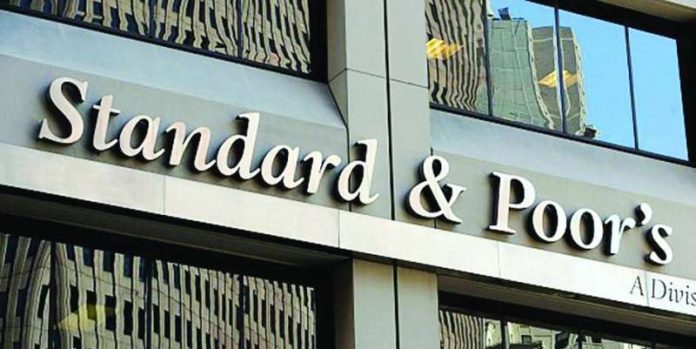In a recent report the international credit rating agency Standard & Poor’s (S&P) reported that banks in Kuwait and Saudi Arabia enjoy the highest coverage of foreign liabilities in the Gulf through foreign assets, even under difficult circumstances.
A local Arabic daily quoting sources, added that UAE banks also enjoy a strong coverage ratio of about 92 percent as of September 30, 2021, supported by net assets. On the other hand, Qatari banks enjoy the lowest coverage of foreign debt by about 35 percent until Dec 31, 2021.
On the other hand, the agency indicated that, on average, Gulf banks constitute about a third of the total external liabilities of their economies, with Omani and Saudi banks contributing less than 10 percent of total liabilities, while Qatari and Kuwaiti banks more than 40 percent.
The banking systems in the UAE, Kuwait and Saudi Arabia have modest net foreign assets positions, while Omani banks are considered as small debtors. On the other hand, Bahraini retail banks and the Qatari banking system suffer from large net external debts. At the level of the Gulf economies, Kuwait has the strongest net external position, amounting to about 500 percent of GDP, in addition to the highest net government position.
On the other hand, the agency stated in its report that although the Gulf demographics are dominated by expatriates, this is not the case with the bank accounts, as high structural remittances from the region have limited the accumulation of potentially short-term financing in the regional deposit base.
Although foreign residents constitute about 90 percent of the population in Qatar and Dubai, they represent a much smaller percentage of individual deposits. In Qatar, for example, expatriate deposits constitute about 20 percent of total deposits and the detailed data shows the depositor’s nationality is relatively low, Standard & Poor’s expects this percentage to be slightly higher in the UAE due to the availability of long-term mortgages and savings products for non-nationals.
On the other hand, the agency expected that the deposits of non-nationals in Kuwait and Saudi Arabia would represent less than 20 percent of the total because the incentives to retain foreign workers outside contracts are less common. The agency expects Kuwait’s GDP to reach $165.8 billion in 2022.
In addition, S&P reported that banking systems in the Gulf have proven resilience in the face of previous regional shocks, and the 1990 Gulf War was one of the only cases where domestic deposits of the private sector showed instability.
Historically, large external transfers have limited the accumulation of short-term deposits, and confidence-building measures from government agencies have helped reduce the volatility of domestic financing during shocks.
Moreover, corporate activity and continued population growth have fueled deposit expansion and offset outflows, while the relative safe haven status of the Gulf states has attracted stable funds from high-risk geographies.
S&P believes that there are some weaknesses in the Gulf banking system, represented in the continued growth of external financing, and the possibility of an increase in the proportion of expatriates’ deposits in some banking systems.
However, the hypothetical scenarios developed by Standard & Poor’s show that most Gulf banking systems can withstand large outflows of financing without additional support























